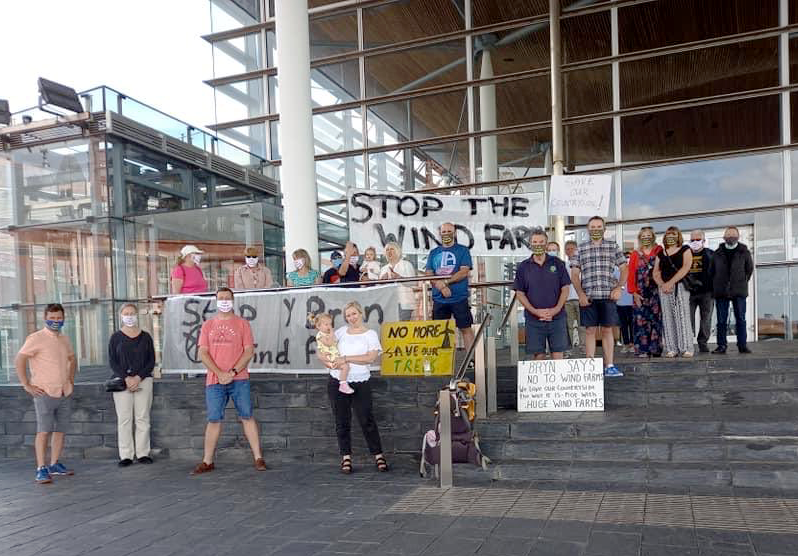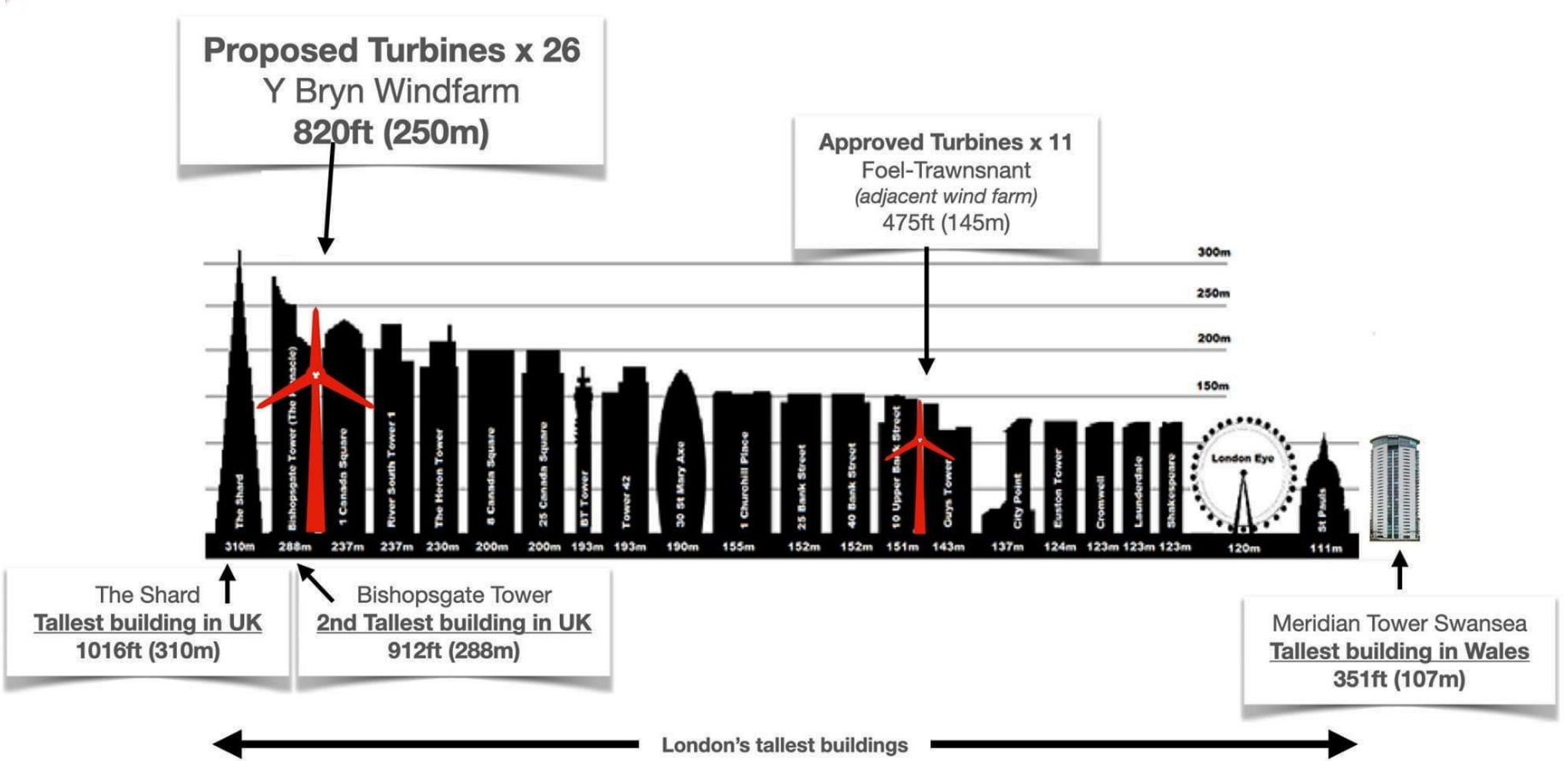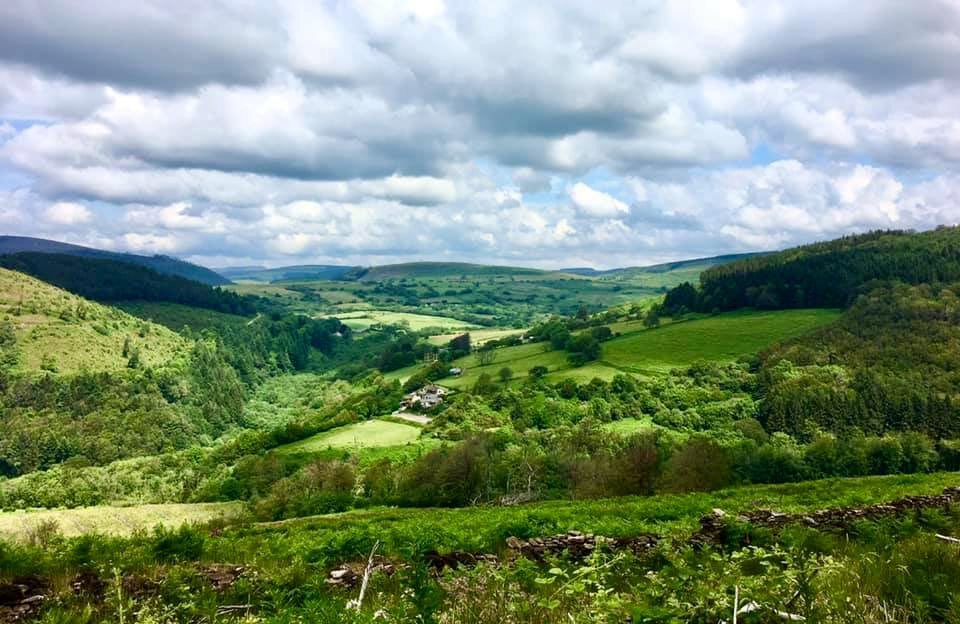My intention was to start winding down this blog, spend more time with my wife, grand-children, books, Malbec . . . but things keep cropping up. That said, it’s very unlikely I shall undertake major new investigations. Diolch yn fawr.
♦
![]() Last week, I introduced you to the Bute empire, based in Edinburgh and London, which, under a variety of company names, is planning many new wind farms in Wales.
Last week, I introduced you to the Bute empire, based in Edinburgh and London, which, under a variety of company names, is planning many new wind farms in Wales.
This week’s piece is partly a recap, partly putting a new slant on things, and partly some fresh thoughts on the unequal relationship between Wales and England.
♦
MAPPING IT OUT
Here are the location-specific Bute Energy companies, sixteen in all, each with a link to the relevant Companies House entry. Is there a project near you?
Twyn Hywel Energy Park Ltd / Rhiwlas Energy Park Ltd / Banc Du Energy Park Ltd / Aberedw Energy Park Ltd / Moelfre Energy Park Ltd / Mwdwl Eithin Energy Park Ltd / Garreg Fawr Energy Park Ltd / Bryn Gilwern Energy Park Ltd / Nant Mithil Energy Park Ltd / Lan Fawr Energy Park Ltd / Waun Hesgog Energy Park Ltd / Esgair Galed Energy Park Ltd / Llyn Lort Energy Park Ltd / Nant Ceiment Energy Park Ltd / Nant Aman Energy Park Ltd / Tarenni Energy Park Ltd
The full list of recent company formations, and other background information, can be found here.
I’ve now drawn up a map showing what I hope is the correct location of each of Bute’s planned wind farms. I can’t be absolutely sure because in most cases all we have is a company name, and that name could fit a number of locations.
The names Rhiwlas and Moelfre, for example, can be found in many locations.
But by ruling out urban areas, National Parks, etc., etc . . .

To help them build these wind farms, Bute’s head honcho, Oliver James Millican, and his constantly growing band expect help from both Labour Party insider David James Taylor and Lesley Griffiths MS, the Minister for Rural Affairs in the self-styled ‘Welsh Government’.
I’m not exactly sure what’s expected from Taylor, but he’s been made a Member of Grayling Capital LLP, and he’s also been given shares in Windward Enterprises Ltd, both in his own name and that of his company Moblake Associates Ltd.
Taylor seems to be paying himself some £200,000 a year from Moblake Ltd but the skeletal accounts give no indication of where the money originates. Though, strictly speaking, and quoting the ‘accounts’, the money is, ‘an interest free loan and does not have a repayment date’.
But seeing as Taylor is the sole Moblake director, and holds the only share, for him to ‘repay’ Moblake would just be transferring money from one pocket to another.

From Ms Griffiths Millican and whoever he might be working with obviously expect planning permissions. I’m not for one minute suggesting favouritism, let alone inducements. It’s simply that, as we saw when she overruled the Planning Inspector’s decision on Hendy Wind Farm, she has the final say.
Griffiths and Taylor are well known to each other. It would be unusual if they weren’t, seeing as they belong to the same political party and are both from the north east. Here’s Taylor out canvassing for Lesley Griffiths in the 2016 Welsh Assembly elections.

◊
A WEE DIGRESSION, BUT INTERESTING
Something I didn’t explore in the previous post was the fact that Taylor, Griffiths, Sophie Howe (Commissioner for Greenwash), and others, were on the same side before and after the Carl Sargeant suicide in November 2017.
This picture below, from 2014/15, shows, left to right, Carl Sargeant, Sophie Howe, a former Spad to Sargeant (though when the photo was taken she was deputy to former MP Alun Michael, the South Wales PCC), Lesley Griffiths, and Leighton Andrews AM for Rhondda, who lost his seat in 2016 to Leannein Wood.
David Taylor worked as a Spad or trouser presser for Andrews, and his loyalty to the party was rewarded when, in 2016, he was the Labour candidate for the North Wales PCC post. He lost out to Arfon Jones, the Plaid Cymru candidate.

The thing about this picture is, it’s not a ‘work’ photo, they’re out together relaxing. They know each other, they obviously enjoy each other’s company.
After Sargeant’s suicide they all rallied to his defence, or at least, they didn’t do any favours to then First Minister Carwyn Jones, lobbyists Deryn, and others coming under fire. Lesley Griffiths is quoted more than once in this report.
In this piece, we read that Sophie Howe: ‘ . . . told Coroner John Gittins: “I find that incredible that he (Sargeant) can be sacked without being told what the allegations were.”’
While Leighton Andrews has plenty to say on his blog.
In this November 2018 report from the Wrexham Leader we are told that, ‘The inquest also heard a statement from David Taylor, a friend of Mr Sargeant who was previously employed by the Labour Party.’
It’s all coincidence, no doubt, but from this small group around Carl Sargeant we have three – Howe, Griffiths, Taylor – currently contributing to Wales being ripped off by every shyster who can spin a line about saving the planet.
◊
‘JUST A FEW QUESTIONS, SIR’ (Oh, the times I’ve heard that!)
I wrote to Bute Energy last Tuesday morning, ahead of office hours, giving them the chance to clarify a few points for this follow-up.
My questions were:
- When and where did you first meet David James Taylor?
- Were you introduced to Taylor? If so, by whom?
- What is your relationship with Taylor’s Moblake companies?
- Why did you make Taylor a Member of Grayling Capital LLP?
- Why did you give Taylor (and Moblake) shares in Windward Enterprises
- Have you met Lesley Griffiths, Welsh Government Minister for Rural Affairs? If so, where and when?
- Did you have advance warning of Ms Griffiths’ overturning a Planning Inspector’s decision on Hendy Wind Farm in October 2018?
- Why did you recruit former Labour MEP Derek Vaughan to chair your Welsh Advisory Board?
- Why does your Welsh Advisory also have as a member John Uden, a former London police officer now specialising in property security, who, apparently, has no Welsh connections?
- Why do you have so many wind farms planned for Wales?
- You don’t know Wales, so how did you find these sites? Did someone recommend them?
- Do the principals in Bute and the other companies have any experience in engineering, construction, renewables, or related fields?
- Do you really intend building wind farms or will you simply obtain planning permission and then sell the sites?
- Talking of the sites, have you been promised that, if necessary, powers of compulsory purchase will be exercised on your behalf?
- Do you have contact details for David James Taylor?
- Do you have anything you’d like to say?
I’m still waiting for answers.
Having mentioned the ‘skeletal accounts’ of David Taylor’s Moblake Ltd I naturally got to wondering about the accountant.
At the start, Moblake’s registered address was in the West End of London, at 109 Gloucester Place. It’s the tidy-looking gaff with the blue door. Though the company registered at that address, Adams Mitchell Ltd, was only formed in August 2019.
In fairness, it looks as though David Taylor was simply using Gloucester Place as an accommodation address. The ‘accounts’ submitted were all his own work.
Though the most recent accounts are a tale of West End to East End. For Moblake’s latest accounts were signed off by Naail & Co Ltd, a husband and wife outfit on Lambeth Walk in property leased with money borrowed from banks.
But the accounts remain unaudited. The accountant just signed off what Taylor put in front of him.

Couldn’t David Taylor have found a nice, respectable accountant in Wales who would have presented fully audited and verified accounts?
Makes you wonder.
◊
‘HERE YOU ARE, TAFF – DON’T SAY WE DON’T GIVE YOU NOTHING’
Maybe I’d better explain what I mean by the heading to this article about England’s wind turbines in Wales. Now pay attention, because this is a bit complicated, and prefaced with, ‘As I understand it . . . ‘.
In 2015 legislation was passed, covering England and Wales, that gave local planning authorities – i.e. councils – powers to decide on wind farms of 10MW and above. (They already had the power over smaller installations.)
This had been mooted for some years and finally came into effect, on June 18, 2015. With political spin about upholding election promises by letting ‘local people have the final say on wind farm applications’.
Hinting that this was a decision dictated by electoral considerations. For wind farms are erected in rural areas, and the rural areas of England are overwhelmingly Conservative in their political sentiments.
The Conservative and Unionist Party would lose MPs and councils if a Tory government in London over-ruled local councils to impose wind farms on areas where locals didn’t want them.
The map below might help illustrate my point.
You can do your own by going to this site, and by playing with the various layers on the interactive map you can end up with whatever your heart desires.

To reproduce my map, from the menu on the left: In ‘Energy Type’, keep Wind Onshore. In ‘Energy Capacity’, 10MW and Above. In ‘Status’, Application Submitted, Awaiting Construction, Operational, and Under Construction.
If we could add a layer giving political features it would show that Tory-voting England is almost entirely free of wind farms.
Below you’ll see an extract from a relevant UK government publication. This makes it clear that the 2015 legislation covered England and Wales.

Obviously, this legislation means there will be hardly any wind farms in England. And that will result in the UK struggling to meet its climate change obligations. It will also be bad news for the Tories’ business friends who milk the subsidies paid for renewable energy.
Which is why I am convinced pressure was applied from London on the ‘Welsh Government’ for Wales to accept more and more wind farms.
This explains why the legislation was reversed in Wales to make wind farms of 10MW Developments of National Significance, meaning local authorities must either grant planning permission or expect to be over-ruled if they refuse planning permission. For the ultimate power rests with Welsh ministers. (Here’s the link.)

This explains how, in 2018, Lesley Griffiths was able to over-rule both Powys County Council and the Planning Inspector on Hendy wind farm.
Ordinarily, Wales and England moving in separate directions would be something I’d applaud, but not this time.
Perhaps someone in the ‘Welsh Government’ can explain why 10MW wind farms are Developments of National Significance in Wales, but not in England.
Especially as we share the same National Grid and the electricity generated by ‘Welsh’ wind farms will most likely go to England.
As I’ve said, I’m convinced pressure was applied from London, perhaps via the civil servants operating in Wales who answer to London. The ‘Welsh Government’ couldn’t admit that, so it was glossed over with the Well-being of Future Generations Act, which came into force in April 2016.
Followed by pious declarations to make Wales ‘carbon neutral’ and then, like a maiden aunt having an attack of the vapours, declaring a ‘Climate Emergency‘.
As if anybody outside of Corruption Bay gives a toss!
These bouts of orchestrated hysteria turned planting wind farms all over Wales into an environmental crusade. The panel below, from this ‘Welsh Government’ site, explains why someone thinks we needed this legislation.

Note that climate change, over which Wales can have no effect, is more important for the ‘Welsh Government’ than spheres where it could make a difference.
Priorities, eh!
◊
CONCLUSION
Despite the apparent divergence of approach over Developments of National Significance in 2015/16 we are, effectively, still in the Englandandwales model.
Making wind farms another example of devolution being used to serve England’s interests rather than ours. Consider this . . .
Just imagine if a Tory government in Westminster had said, ‘We don’t want wind farms in England – so we’re going to dump them all in Wales’. There would have been a national outcry.
Yet that is what has happened!
It’s the old story of Wales being exploited for the benefit of England. And just as with our water, we are not compensated for what we export.
Wanting Wales to be ‘carbon neutral’ and declaring a ‘Climate Emergency!’ is just vain posturing to disguise Wales’ subordinate status. Play-acting that won’t improve the lives of Welsh people, or make any difference to climate change.
And things might be about to get a whole lot worse.
For the number of wind farm applications is accelerating. Not only do we have Bute Energy’s 16 projects, there’s also the monster turbines planned for Y Bryn, between Port Talbot and Maesteg; while more recently I’ve learnt of a plan for turbines above coal tips at Ynyshir in the Rhondda Fach.
Yes, honestly, above coal tips.
How many more are planned that we haven’t yet heard about?
There is nothing to be said in favour of wind turbines. In their brief and intermittent lives they do not repay the environment for the damage caused in making, transporting, and erecting them. They are all built and owned by foreign companies. They provide no jobs. They despoil our landscapes. They kill birds. They cause flooding.
But never mind, we’re serving England’s interests. Again.
♦ end ♦






